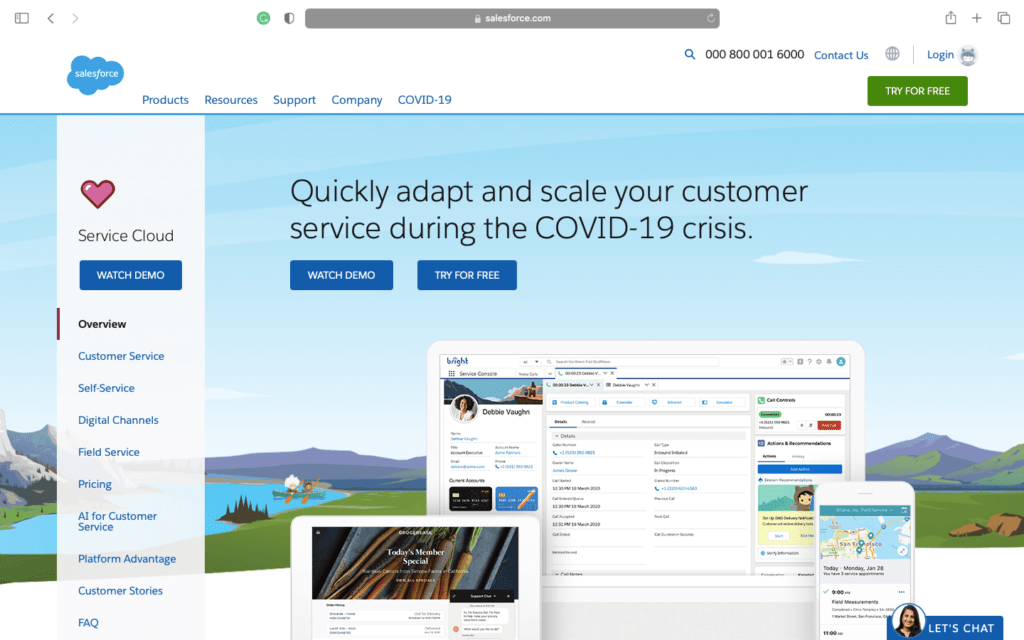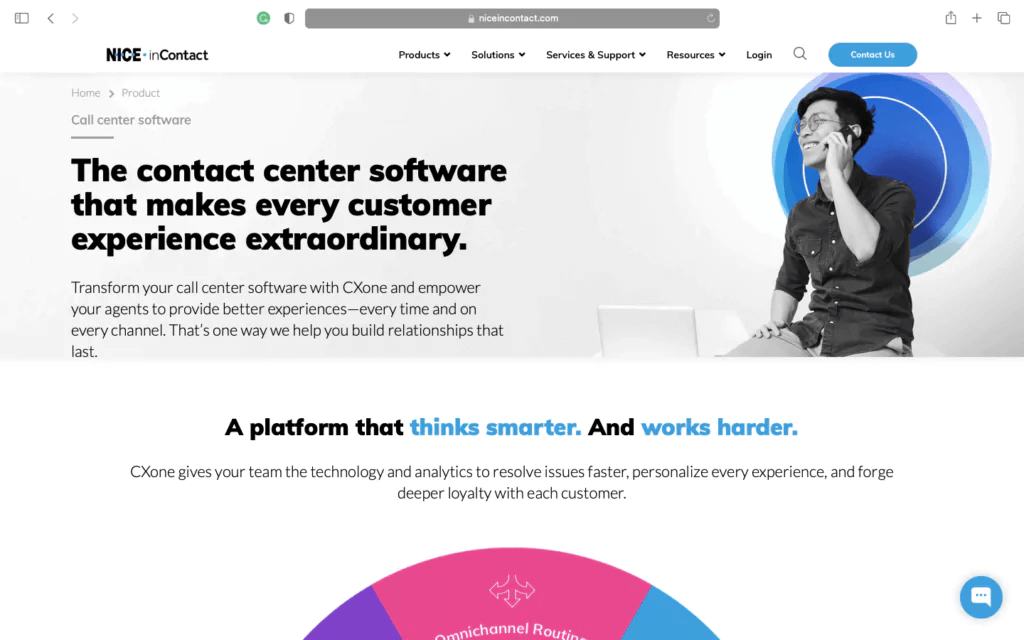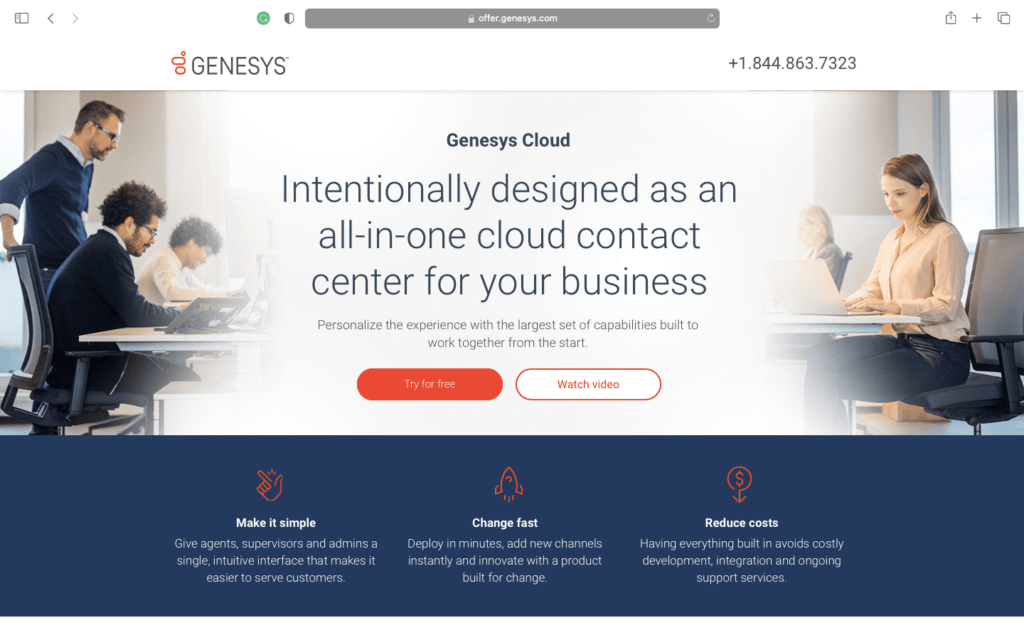Looking for a detailed guide to call center optimization?
Call centers are an inseparable part of a customer-centric business. They greatly assist an organization in improving customer interaction, resolving issues, and enhancing brand value.
The customer service industry has grown by leaps and bounds, and most call centers now use advanced technology to enhance their performance.
To stay in the race, your organization needs to focus on improving the quality of the call center. This improvement includes rebuilding infrastructure as well as workforce optimization.
In this article, we’ll highlight the best strategies for optimizing your call center performance. As a bonus, we’ll also list the top three call center optimization software in 2023.
Let’s go.
Why do you need call center optimization?
Call center optimization is a part of the customer experience strategy. It can modernize a call center operation and workforce management system with digital, automated, and advanced tools.
Call center optimization enhances customer satisfaction, customer loyalty, and employee engagement.
Customer service representatives who’re more engaged and feel fulfilled in their roles are more likely to provide a better customer experience.
Here are some other benefits of call center optimization:
- Reduced costs: Call center optimization provides call center agents with better tools and strategies to perform their jobs in less costly, time-saving ways.
- Insights from customer data: Center optimization will help keep track of customer calls and provide call data to generate valuablel insights and reports that can improve customer service.
- Maintain service level objectives: Call center optimization can help you maintain service level goals by streamlining your operation with advanced technology such as tracking, forecasting, and data analysis. This streamlining can increase your service level and meet customer expectations.
Once you decide on implementing optimization, you’ll need to target specific areas in your call center operations.
What to optimize for improved call center operations
While implementing call center optimization can offer tremendous benefits, it’s crucial to know which areas of your call center operations need a transformation.
Any call center has three vital aspects – metrics, workforce, and infrastructure.
If you’re looking to modify your call center, it’s imperative that you consider all the aspects and not just focus on one.
Here are a few ways to optimize your call center operations:
- Improve your workflow with workforce management: Workforce management refers to all the call center procedures that ensure that the correct number of agents are available at the right time. These procedures include forecasting contact volumes, creating a business continuity plan, using the right metrics, etc.
- Maximize employee productivity with workforce optimization: A call center workforce optimization plan involves incorporating new processes and call center technology to get the most from your team. The best practice is automating crucial processes so agents can do more substantial work.
- Enhance efficiency with call center scheduling: Innovative staff scheduling can improve a contact center drastically. Call center scheduling software with built-in automation features ensures better cohesion and cooperation.
Beyond identifying problem areas in your call center, you’ll also need a few strategies that help implement optimization easier.
Top 3 strategies for optimizing call center performance
Here are some practical top tips for successful call center optimization:
1. Use the right call center metrics
The first thing you need to do during call center performance management is to analyze your Key Performance Indicators (KPI).
You should set goals for these key performance indicators and track your progress.
However, you must measure the right metrics to positively impact your call center performance and improve the service level.
Some of these metrics include:
A. Average speed to answer
It tracks the average time your call or contact center agent takes to answer the inbound call.
The lesser time, the better!
However, if your frontline agents take a lot of time to answer calls, you must determine the root cause of the issue and amend it.
B. First call resolution rate (FCR)
This metric helps you understand how frequently your center agents can resolve customer queries within the first contact.
If you can resolve their issues in their first call, they’re more likely to have a better customer experience and become loyal customers.
C. Number of calls until resolution
This metric measures the number of calls a customer has to make before their query reaches a resolution.
The analysis can also highlight other areas for improvement in the call center, like lack of advanced software, untrained new hires, etc.
D. Auxiliary time
Auxiliary time is when your agents don’t take inbound or outbound phone calls.
Instead, they might be attending meetings, undergoing training sessions, doing paperwork, taking a lunch break, etc.
It’s important to set limitations for a sufficient auxiliary time so that you can take corrective measures if the time goes beyond these standards.
E. Active and waiting calls
These metrics help determine the number of active and ‘on-hold callers’ at any given point. You can also understand how long a client has to wait before connecting to the right customer care agent.
If the wait time is too long, the customer experience may go from bad to worse instantly.
Analyzing these parameters will give you a clear picture of whether you need to increase your staffing, streamline workflows, etc.
F. Schedule adherence
This metric shows how often the agent sticks to their schedule. It monitors if agents are doing their assigned daily tasks at the correct times.
You can analyze whether or not the agent has good time management skills.
It’ll help you understand the productivity of individual agents and guide them accordingly.
Read more about measuring employee productivity in the call center.
G. Customer satisfaction score (CSAT)
The customer satisfaction score measures customer satisfaction with a business, purchase, or interaction.
The customer satisfaction score generally appears during customer feedback surveys, usually conducted at the end of the call.
Customer satisfaction surveys involve the customer rating your service on a 5 or 10-point scale, with 1 indicating highly dissatisfied and 5 or 10 indicating extremely satisfied.
While customer satisfaction scores vary depending on the industry, a commendable score typically falls between 75% and 85%.
H. Average handle time
The average handle time metric evaluates the average duration of one call session.
It measures the hold time, talk time, and other related tasks that occur during customer interactions.
Here are some more call center statistics and metrics that you can track.
2. Keep your call center team happy
Employees are an integral part of your call center.
Sometimes, you may get so focused on enhancing the customer journey that you may forget to pay attention to the agent experience.
To increase employee retention and agent productivity, you must ensure that your center agents have a positive and enthusiastic work environment .
Always remember, a happy customer care agent will undoubtedly result in a happy customer!
Here’s how you can keep your support team satisfied:
A. Invest in comprehensive agent training
Your agents need to be up-to-date with your organization’s latest products and services.
Additionally, customer expectations and behavior changes mean that your agents must constantly update their know-how, soft skills, and documentation.
Fortunately, an ongoing agent training program can:
- Review agent performance and provide insights.
- Identify areas of improvement.
- Provide relevant training to enhance agent skills.
But how do you set up continuous training sessions?
You can provide continuous training to the agents by:
- Teaming them up on some calls with senior agents.
- Providing employee discounts for a certificate program.
- Encouraging them to attend free webinars or training.
B. Offer on-the-spot agent coaching
Real-time guidance can help you improve the efficiency and productivity of an individual call center agent.
Allow the team leader or a manager to listen in on a few calls and provide immediate assistance whenever needed. They can use methods like whisper coaching to provide on-the-spot guidance.
This assistance will boost the agent’s confidence when providing customer support. They’ll also be able to handle complex client queries with ease.
Additionally, on-the-spot guidance can improve agent soft-skills like empathy, script adherence, etc.
C. Measure and analyze performance
Measuring and analyzing agent performance will give you valuable insights into various metrics such as etiquette, script compliance, problem-solving capabilities, etc.
You can use scorecards to assess the agent and call center performance regularly.
This awareness can help you get a better picture of the highest and the lowest-performing agents with ease.
Important call center metrics that help gauge agent performance include:
- First Call Resolution (FCR).
- Net Promoter Score (NPS).
- Customer Satisfaction (CSAT).
D. Plan monthly events
Monthly office events go a long way in increasing the rapport between team members.
Team outings, group lunches, or even simple coffee breaks are great ways to increase team bonding, especially among new agents. Remote and hybrid teams can plan monthly events such as a virtual happy hour or trivia afternoon over Zoom.
Employees can open up more and display their true personalities by connecting with colleagues outside the workplace. These interactions can improve collaboration and increase agent productivity.
E. Have regular one-on-one meetings
Try to fit a one-on-one session with all the agents at least once a week.
It’ll help you gain insider insights into client complaints, agent issues, or even infrastructure problems. These insights can help you get a 360-degree view of your business performance and shortcomings.
These meetings can also help with agent scheduling. Agents can show how the manage their workload, most productive hours, and general availability on specific days. These conversations can help a call center manager adjust the work schedule accordingly.
Moreover, it’ll also give agents a channel to express their grievances. You can assure them that their call center manager cares about their well-being.
3. Improve call center infrastructure
The last significant step for improving call center performance is keeping your center updated with the latest call center technology.
Such tools will help you enhance your response time, as well as the customer experience.
You may not realize it now, but advanced infrastructure goes a long way during critical periods such as high call volume spikes and can improve call center performance.
Here’s how you can use advanced technology for better call center management:
A. Use chatbots
Your call center may be flooded with calls, especially after particular events like a product launch, the holiday season offers, etc.
It’s also widespread to have multiple customers with the same questions or straightforward ones that don’t necessarily need agent intervention.
At such times, an automated chatbot can help answer frequently asked questions and reduce incoming calls.
What’s a chatbot?
It’s an artificial intelligence based chat tool that can significantly increase customer engagement on your website. Customers can type in their queries in the text box of the chatbot, and it can intelligently deal with most questions without requiring any live agent interaction.
B. Invest in a call-back solution
An automatic call-back solution enables the caller to choose to be called back instead of being put on hold.
You can define the amount of hold time, after which the Interactive Voice Response (IVR) system may offer this option to the customer.
The call-back option drastically improves the customer experience and loyalty since it offers scheduling the call back according to their convenience.
C. Make provisions for an internal chat
Internal chat tools such as Slack, Microsoft Teams, etc., enable agents to communicate with each other and the team leader, ask for help, send internal documents, etc.
The tool can also serve as a medium for having personal conversations, sharing inspirational quotes, or even a good joke! This addition will help lighten the work environment, increase agent engagement, and reduce turnover.
D. Establish unified communications through omnichannel software
Various tools, such as AI-enabled (artificial intelligence) predictive analytics tools, quality monitoring tools, etc., will undoubtedly help in the quality management of your call center.
However, while using such advanced call center technology, you should also ensure that all the tools in your stack work together efficiently and are compatible with any digital channel.
Such omnichannel software solutions let you have customer contact through multiple channels like the web, mobile, or even a landline phone. It helps establish unified communications that can improve customer engagement multifold, increasing brand loyalty.
Furthermore, it enables your call center agent to reach customers on traditional and other platforms, broadening the reach. It can also help enhance their efficiency and helps them provide superior customer service.
3 Smart call center optimization software
Here’s a list of the top three call center optimization software with their key features, pricing, and user ratings:
1. Salesforce Service Cloud

Salesforce Service Cloud provides advanced functionalities for call and contact center optimization like call recording and transcribing, AI-powered service analytics, computer telephony integration (CTI), etc.
Key features
- Omnichannel system to understand customers’ grievances from multiple channels such as email, social media, etc., and route them to the right agent.
- Automatically record and transcribe a call.
- Dashboards to analyze agent performance and call or contact center KPIs.
- Self service portals and communities enable customers to find solutions without needing agents.
- Einstein Bot resolves certain common queries without any live agent interaction using built-in natural language processing, voice recognition capabilities, and speech analytics.
Pricing
Salesforce Service Cloud has a 30-day free. The basic plan starts at $25/per user per month. The advanced plans can go as high as $300/per user per month.
User ratings
- G2: 4.2/5 (2200+ ratings)
- Capterra: 4.4/5 (640+ ratings)
2. CXone

CXone is a cloud-based call center software that can be used to enhance your agent and customer experiences. It works across your call center and all other contact center channels.
Key features
- Empowers agents to provide personalized and quick responses by understanding the customer journey across multiple channels.
- Provides actionable insights through easy-to-understand customer analytics.
- Promotes employee self-improvement and quality management through the agent engagement feature.
- Automates mundane tasks and streamlines the resolution of a customer issue.
- Displays up-to-date call center metrics, such as KPIs (Key Performance Indicators), for a snapshot view.
Pricing
CXone has a 60-day free trial period. Paid plans start at $100/feature per month.
User ratings
- G2: 4.3/5 (1500+ ratings)
- Capterra: 4.2/5 (530+ ratings)
3. Genesys Cloud

Genesys Cloud is a comprehensive app that provides all the customer information in one place to enhance the customer and agent experience.
Key Features
- Connects customers to the right contact center agent using predictive routing.
- Integrates the call center software with your existing customer relationship management (CRM) software.
- Increases employee engagement using the call center gamification platform.
- Enhances the efficiency of the call center with the Genesys Workforce Optimization software.
- Provides actionable insights into any customer interaction using call center analytics.
Pricing
Genesys Cloud has a 30-day free trial. Paid plans start at $75/user per month when billed annually.
User ratings
- G2: 4.4/5 (800+ ratings)
- Capterra: 4.3/5 (160+ ratings)
Wrap up
Call center, and workforce optimization are an integral part of the performance enhancement process.
Knowing which areas need improvement and which need a new strategy will significantly improve the call center performance.
Using the guidelines, you can undoubtedly give your call center processes a much-deserved makeover. Happy optimizing!

Liam Martin is a co-founder of Time Doctor which is software to improve productivity and help keep track and know what your team is working on, even when working from home.


